 I find the term “walking around simulator”, which games like this have often been categorised as, somewhat derogatory. It’s as if there’s nothing to the game at all, bar walking around, and it should be derided because of this. Which is missing the point. The aim of these games is not to “win”, not to solve puzzles and leap gaps and shoot Nazis, but to discover the story. Yes, you do this by walking around, but there’s more to it than that.
I find the term “walking around simulator”, which games like this have often been categorised as, somewhat derogatory. It’s as if there’s nothing to the game at all, bar walking around, and it should be derided because of this. Which is missing the point. The aim of these games is not to “win”, not to solve puzzles and leap gaps and shoot Nazis, but to discover the story. Yes, you do this by walking around, but there’s more to it than that.
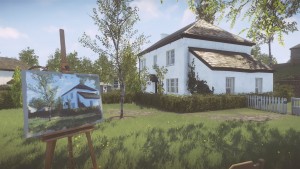 In Everybody’s Gone to the Rapture, erm, everybody’s gone to the rapture. You start off as an unknown person on the outskirts of a Shropshire village in 1984, near an observatory. You can’t enter the observatory as the gates are locked, so you need to travel a massive loop of the village to try and get in the back way. As soon as you set off you hear a radio message which alerts you to “an event”, and as you explore the village radios and telephones start to fill in some of the story behind what happened.
In Everybody’s Gone to the Rapture, erm, everybody’s gone to the rapture. You start off as an unknown person on the outskirts of a Shropshire village in 1984, near an observatory. You can’t enter the observatory as the gates are locked, so you need to travel a massive loop of the village to try and get in the back way. As soon as you set off you hear a radio message which alerts you to “an event”, and as you explore the village radios and telephones start to fill in some of the story behind what happened.
Along the way, orbs of light direct you to places of interest, where you see some conversations and actions leading up to The Event played out. Technically, you can just walk past everything and head for the end of the game, but then you really do have just a walking around simulator on your hands, and you’re missing both the point and the game.
When you reach the end, there’s no decisive conclusion and no full exposition of exactly what happened. It’s up to you to formulate in your head what you think occurred based on what you’ve seen and heard, and how you interpret what the “glowing light” actually is.
Almost as much fun as putting this together yourself, is reading what other people thought and how their theories compare to your own. With that in mind, here’s a big spoiler:
[spoiler]
I think it’s quite clear the light is some sort of alien intelligence. Kate and Stephen somehow managed to coax it over to Earth either purposefully or by accident.
It then attempted to communicate with us on Earth, mistakenly trying to talk to the birds first (killing them, which is why they’re all dead everywhere), then other animals (including the cows – they’re all dead too), before being more successful with humans.
In the end, I guessed the character you’re walking round as is actually Kate, and the light “thing” is Kate’s partner. Everyone else got to be with their partner once “raptured”, Kate became one with it and then revisited all the rapturings (i.e. you playing the game) – that’s why the light is guiding her to the end. She says she was able to hold time still and see how everyone left and where they went.
[/spoiler]
Obviously, there’s more to it than all this, but I’m not intending to write a dissertation! There are a lot of side stories as well, like the love triangle between Stephen, Lizzie and Kate, or Frank’s difficult relationship with his sister, all of which are explored literally by exploring. It’s intriguing and compelling finding out everything you can from the clues left behind, and the English village setting is beautiful to wander round.
 The only minor negatives I have are that sometimes the walking pace, even with the “jog” button, is much too slow (especially when you realise you’ve missed something and have to backtrack for miles), and that there is a huge amount of asset reuse. The same shed, greenhouse, plastic garden table, white sheets on the washing line, Raleigh Burner-alike BMX bike and books are everywhere, repeated over and over again. Houses all have the same kitchen. Even the two pubs in the village have exactly the same “special offers board” and virtually the same layout inside. The worst copy and paste job is the large number of cars that are around the village – of which there are only about 5 or 6 types. This wouldn’t be a problem but they’re not just the same type of car, they’re exactly the same car with the same colour and same number plate.
The only minor negatives I have are that sometimes the walking pace, even with the “jog” button, is much too slow (especially when you realise you’ve missed something and have to backtrack for miles), and that there is a huge amount of asset reuse. The same shed, greenhouse, plastic garden table, white sheets on the washing line, Raleigh Burner-alike BMX bike and books are everywhere, repeated over and over again. Houses all have the same kitchen. Even the two pubs in the village have exactly the same “special offers board” and virtually the same layout inside. The worst copy and paste job is the large number of cars that are around the village – of which there are only about 5 or 6 types. This wouldn’t be a problem but they’re not just the same type of car, they’re exactly the same car with the same colour and same number plate.
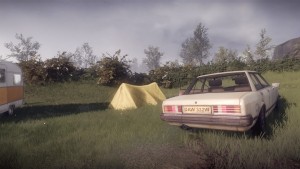 Sometimes you can see that it’s intentional, with, for example, a car appearing in one location with a Peter Pan hat and swords inside, then appearing later at the holiday camp where the kids were performing Peter Pan, but most of the time it’s just jarring. In one case there’s a carpark with two instances of the exact same van in it! There’s no reason why they couldn’t have replaced the number plates and colour-swapped the cars to mix it up a bit, surely? Or had a red-and-yellow Burner instead of a blue-and-yellow one occasionally? I realise it was a small team making the game, but this would surely have been a tiny job compared to the rest?
Sometimes you can see that it’s intentional, with, for example, a car appearing in one location with a Peter Pan hat and swords inside, then appearing later at the holiday camp where the kids were performing Peter Pan, but most of the time it’s just jarring. In one case there’s a carpark with two instances of the exact same van in it! There’s no reason why they couldn’t have replaced the number plates and colour-swapped the cars to mix it up a bit, surely? Or had a red-and-yellow Burner instead of a blue-and-yellow one occasionally? I realise it was a small team making the game, but this would surely have been a tiny job compared to the rest?
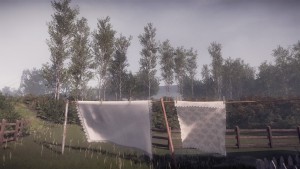 Another thing which was unimportant in the end but seemed necessary to record along the way was all the numbers broadcast on the radios (identical radios…). I started to get a little paranoid that I might miss one. Then I wondered if the names of the books were important. Or the times on the clocks (which were all stopped at the same time, as it turned out). Or the car number plates. I ended up documenting everything and – of course – none of it was needed. In fact, there was nothing you could even do with this information anyway. This wasn’t the game’s fault of course, more mine for not having any idea what to expect and not wanting to miss anything that may be required later on. For new players: read and listen, but don’t bother making notes.
Another thing which was unimportant in the end but seemed necessary to record along the way was all the numbers broadcast on the radios (identical radios…). I started to get a little paranoid that I might miss one. Then I wondered if the names of the books were important. Or the times on the clocks (which were all stopped at the same time, as it turned out). Or the car number plates. I ended up documenting everything and – of course – none of it was needed. In fact, there was nothing you could even do with this information anyway. This wasn’t the game’s fault of course, more mine for not having any idea what to expect and not wanting to miss anything that may be required later on. For new players: read and listen, but don’t bother making notes.
Should you play Everybody’s Gone to the Rapture? Absolutely. Will you understand what you’ve just played when you come to the end? Possibly. Will it matter if you don’t? No, I don’t think so.
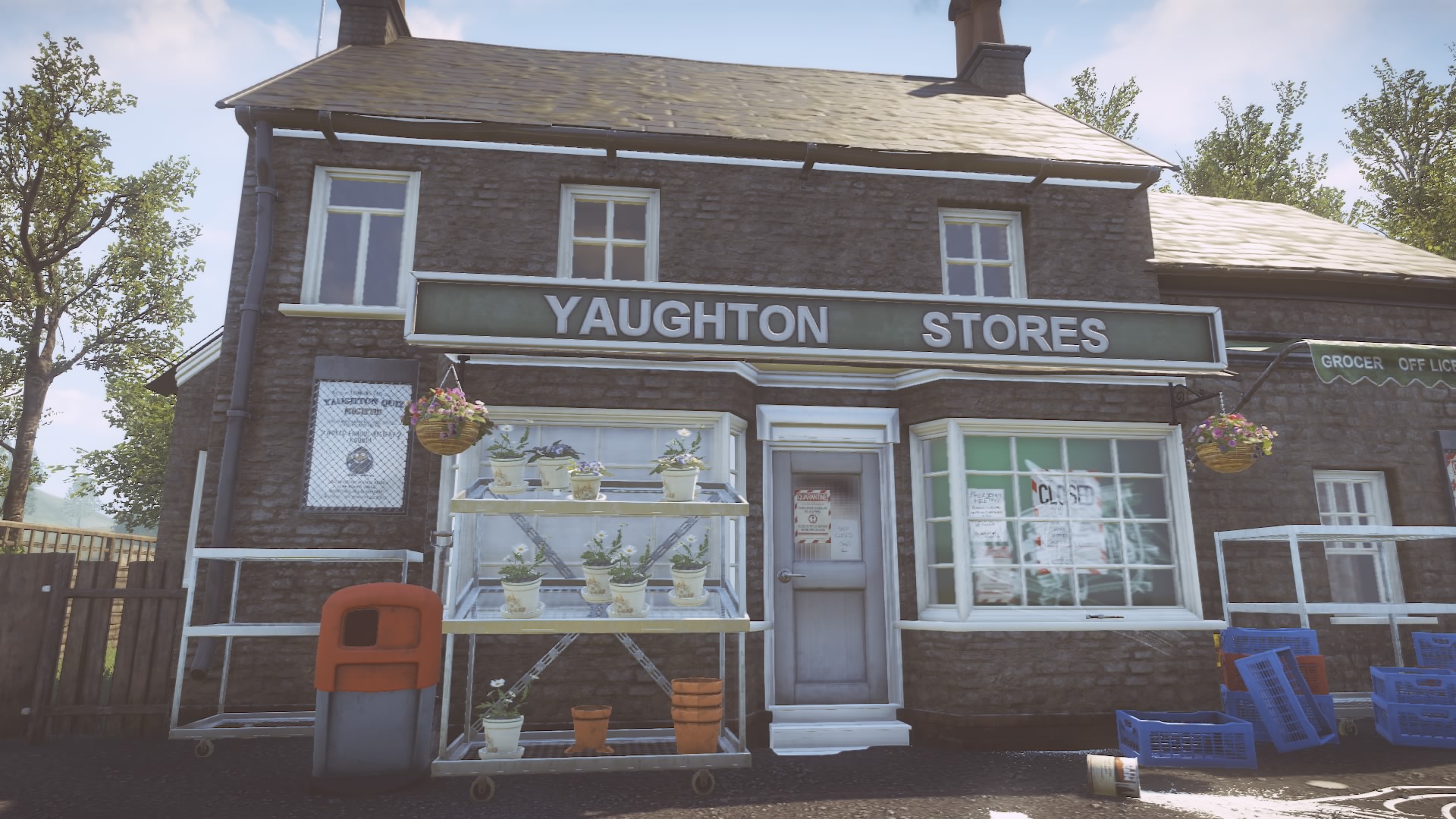

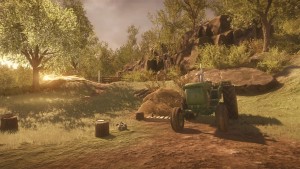

(This suggestion from @SephyTheThird)
I’m not sure why it is topical (even when he suggested it, I wasn’t sure either – perhaps I missed some game news somewhere), but I am sure that I strongly dislike the term “walking simulator”.
I hold my hands up as one of those people who has used it in the past, along with “non-game”, “gameplay-less gaming”, and “press up to win”, but I’ve come to appreciate the genre for the tales they tell more than the gameplay they provide – or don’t, as the case maybe. No, I now prefer the term I possibly coined as I don’t recall reading it anywhere else before I started using it 1: “Narrative Discovery Game”.
Back when I played Journey for the first time, I was quite derogatory about it in terms of being a game. There was no denying the excellent art style, charm and story (such that it was), but I struggled to call it a game. There’s a small amount of platforming, and a little bit of hiding, and perhaps two very simple puzzles, but most of it is simple push forwards and discover. At the time, I think I said it was a terrible game but a great experience.
Gone HomeSince then, I’ve come to accept this sort of title as a game genre in its own right. The game is to discover the narrative, in whichever way it provides as a method of doing that. In Gone Home, you gather notes, messages and items that tell the story of your family’s lives while you’ve been away. There’s little in the way of puzzle or interaction, it all comes down to exploring the house and reading and examining what you find. Some of the story will still elude you even after you’ve completed the game, but that’s OK as some is open to interpretation anyway, and there’s enjoyment in ruminating on what you discovered to fill in the gaps yourself, perhaps discussing with others who may have had a slightly different experience due to clues they missed or ignored.
Dear EstherExpanding on the open to interpretation theme, Dear Esther, another game I unfairly maligned as a non-game back in 2014, has even less in the way of interaction or freedom, and even more in the way of vagueness. Some things you find can be taken as literal, or alternatively as metaphor, and even after finishing the story I was still somewhat confused. I wrote more here, but ultimately it doesn’t matter what I made of what I found – I discovered a narrative, which may differ from the correct one but still fits. Perhaps, in this case, different possible interpretations are intentional.
The Stanley ParableThe Stanley Parable is different again. Unlike the other three titles I’ve mentioned, the whole of The Stanley Parable is actually narrated, and you’re able to make choices as to whether to follow what the narrator is saying, or deviate. The game here is still to discover a narrative, however, but there are a number of narratives from the mundane to the surreal. Again, interaction is limited (you press buttons and open doors – that’s pretty much it) but you’re able to play through various outcomes. And it’s very, very funny.
I’ve played a few other games of this genre too, such as Dr. Langeskov, The Tiger, and The Terribly Cursed Emerald: A Whirlwind Heist, which was a little like The Stanley Parable but told a single, specific story. The Beginner’s Guide was very strange, even for an NDG (let’s hope that catches on, yes?), and taking the style to another extreme there’s Emily is Away.
Emily is AwayThere’s no walking at all in Emily is Away. Everything is played out in the form of Ye Olde AOL Messenger, as you and your friend Emily leave school and go to separate colleges, chatting online every so often, and dealing with the obvious attraction between them that never seems to blossom because sending instant messages does not a romance make. You get to choose different things to say, but (spoiler!) although this changes your “route” to the end, inevitably you drift apart regardless of your decisions. In your final conversation with Emily you can’t even say the words you want, as your character types them, deletes them, and says something stupid instead. It’s clever, and there’s a narrative to find (and make) through your choices. In a way it’s an adventure game, but because the ending is unchangeable and so your choices just change the middle of the story, I can’t really describe it properly as an adventure.
Other games which drift closer or further away from so called “walking simulators” than the likes of Dear Esther – which is probably the poster child for them – include Firewatch (it has adventure elements, but ultimately you can’t not reach the end), The Starship Damrey (some puzzles and even shooting, but the actual aim is to discover the story), Attack of the Friday Monsters, and even Little Inferno approaches it. Perhaps the pinnacle of the genre for me, so far at least (I’ve not played The Vanishing of Ethan Carter yet, which may come close), is Everybody’s Gone to the Rapture.
It has no puzzles. You can pretty much skip to the end. There are red herrings, lots of irrelevant stuff to look at, and so many Raleigh Burners it’s untrue. But: there’s an excellent narrative to discover, piece together, and interpret. In fact, there isn’t just the story of possible aliens inhabiting technology that arches the whole game, but there are so many substories involving the characters who have disappeared and some of these are even more interesting than the main one. From the serious to the mundane, some relating to The Event, others not. Relationships, loss, crisis of confidence, financial ruin, xenophobia. It’s Emmerdale crossed with Close Encounters of the Third Kind, and I loved almost everything about it. Not bad for a game from a genre I ridiculed not so long ago.
Everybody’s Gone To The RaptureIn Walking Simulators you may just walk, but that is missing the point. In a good one, you don’t even realise all you’re doing is walking. When you read a book, all you’re doing is reading but that isn’t the point, is it? The point is you’re absorbing the story as you read. Why can’t you do the same as you walk?
Notes:Dammit! Someone beat me to it! ↩Click to share on Twitter (Opens in new window)Click to share on Tumblr (Opens in new window)Click to share on Reddit (Opens in new window)Click to share on Pocket (Opens in new window)Click to share on Facebook (Opens in new window)MoreClick to email a link to a friend (Opens in new window)Click to share on LinkedIn (Opens in new window)Click to print (Opens in new window)
Related